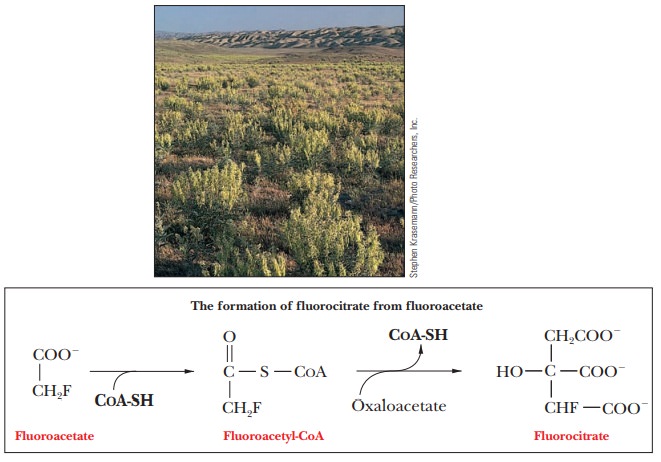Chapter: Biochemistry: The Citric Acid Cycle
Plant Poisons and the Citric Acid Cycle
Plant Poisons
and the Citric Acid Cycle
Another possible substrate for citrate synthase is fluoroacetyl-CoA. The source of the
fluoroacetyl-CoA is fluoroacetate, which is found in the leaves of various
types of poisonous plants, including locoweeds. Animals that ingest these
plants form fluoroacetyl-CoA, which, in turn, is converted to fluorocitrate by
their citrate synthase. Fluorocitrate, in turn, is a potent inhibitor of aconitase, the enzyme that catalyzes the
next reaction of the citric acid cycle. These plants are poisonous because they
produce a potent inhibitor of life processes.
The poison called Compound 1080 (pronounced “ten-eighty”) is sodium
fluoroacetate. Ranchers who want to protect their sheep from attacks by coyotes
put the poison just outside the ranch fence. When the coyotes eat this poison,
they die. The mechanism of poi-soning by Compound 1080 is the same as that by
plant poisons.

Related Topics